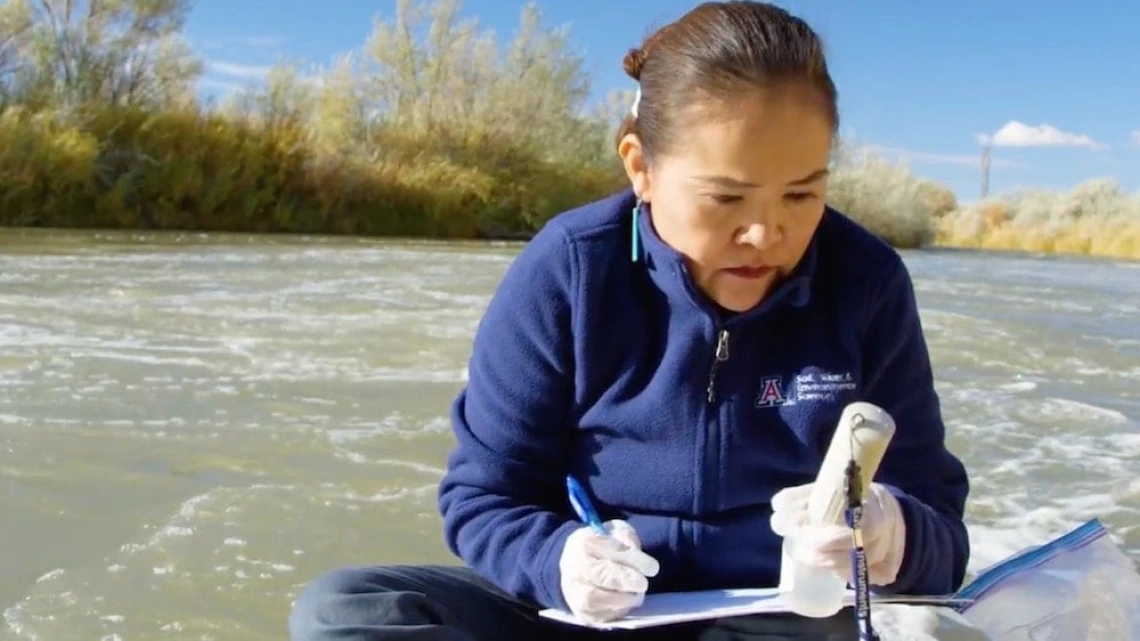Karletta Chief #NativeAmericanHeritageMonth

Today we celebrate Dr. Karletta Chief, a Diné hydrologist, best known for her work to address environmental pollution on the Navajo Nation and increase the participation of Native Americans in STEM.
Here is a video on Dr. Chief’s work from Science Friday.
From a profile on the University News of University of Missouri-Kansas City:
Karletta Daané Chief was born in Black Mesa, Arizona to the Diné, or Navajo, people. She grew up in a house with five siblings and no electricity or running water.
No one in Chief’s immediate family had attended college, but her parents valued education and encouraged her to pursue her degree. Having grown up in a population heavily affected by environmental changes, Chief decided to pursue a degree in environmental engineering.
After high school, she completed a bachelor’s degree in civil and environmental engineering in 1998 and a master’s degree in 2000, both from Stanford University.
She didn’t forget her heritage, returning home to participate in cultural obligations, she won Miss Navajo Nation in 2000. Unlike beauty pageants, the Miss Navajo Nation competition is a celebration of the Navajo culture and includes answering quiz-like questions about the Navajo way of life, demonstrating the proper way to butcher a sheep, and speaking the Navajo language, all while wearing traditional Navajo dress.
Chief returned to academia and completed her doctorate in hydrology and water resources from the University of Arizona in 2007. She spent three years in Las Vegas as a post doctorate fellow with the Desert Research Institute.
In 2011, Chief took a faculty position at the University of Arizona, where she continues to work today. She is currently an assistant professor and specialist in the Department of Soil, Water and Environmental Science. She focuses on watershed hydrology, unsaturated flow in arid environments, and the effects of both natural and human changes on soil hydrology.
Chief continues to work closes with the Navajo Nation, using her knowledge of the environment to study the risks climate change poses for indigenous people, and acting as an ambassador between the Navajo and science communities.
